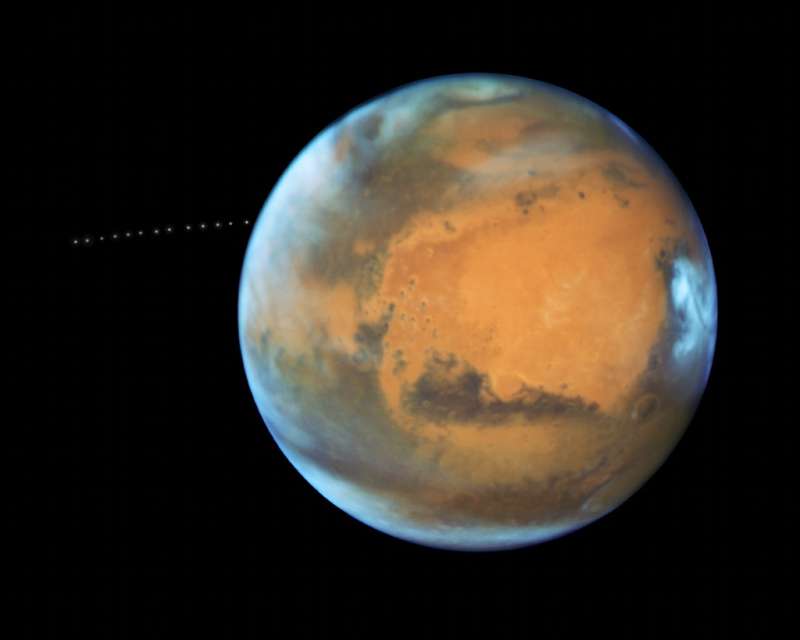Phobos: Moon over Mars

Credit & Copyright: NASA,
ESA,
Zolt Levay (STScI)
-
Acknowledgment:
J.Bell (ASU) and
M.Wolff (SSI)
Explanation:
A
tiny moon with a scary name, Phobos emerges from behind
the Red Planet in this timelapse sequence from the Earth-orbiting
Hubble
Space Telescope.
Over 22 minutes the 13 separate exposures were
captured near the 2016 closest
approach of Mars to planet Earth.
Martians have to look to the west
to watch Phobos rise, though.
The small moon is closer to its
parent planet than any other
moon in the Solar System, about 3,700 miles (6,000 kilometers)
above the Martian surface.
It completes one orbit in just 7 hours and 39 minutes.
That's faster than a Mars rotation, which corresponds to
about 24 hours and 40 minutes.
So on Mars, Phobos can be seen to rise above
the western horizon 3 times a day.
Still,
Phobos is doomed.
Authors & editors:
Robert Nemiroff
(MTU) &
Jerry Bonnell
(USRA)
NASA Web Site Statements, Warnings,
and Disclaimers
NASA Official: Jay Norris.
Specific
rights apply.
A service of:
LHEA at
NASA /
GSFC
& Michigan Tech. U.

